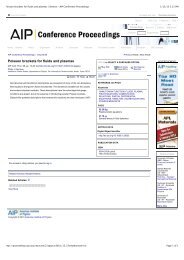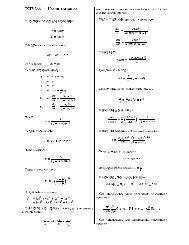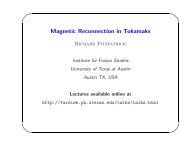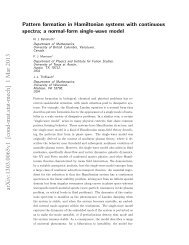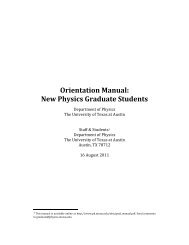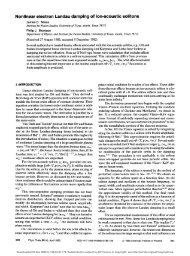Magnetic Fields and Magnetic Diagnostics for Tokamak Plasmas
Magnetic Fields and Magnetic Diagnostics for Tokamak Plasmas
Magnetic Fields and Magnetic Diagnostics for Tokamak Plasmas
You also want an ePaper? Increase the reach of your titles
YUMPU automatically turns print PDFs into web optimized ePapers that Google loves.
<strong>Magnetic</strong> fields <strong>and</strong> tokamak plasmas<br />
Alan Wootton<br />
The wire mesh works to screen electric fields because the external flux lines mainly end on the<br />
mesh. The effectiveness depends primarily on the size <strong>and</strong> type of the mesh. <strong>Magnetic</strong> screening<br />
is effected by induced currents; DC magnetic fields are not screened, <strong>and</strong> low frequency AC<br />
magnetic fields are only poorly screened by non magnetic materials. With increasing frequency<br />
the magnetic shielding improves <strong>and</strong> approaches a finite value. Double screens, insulated from<br />
each other except at one point, improve the screening. These rooms work well to 20 MHz.<br />
Above this the screen room size can equal the cage dimension, causing resonances.<br />
Sheet metal rooms have better screening properties than double walled wire mesh, but breathing<br />
is a problem. The screening against electric fields is ideal since no flux can penetrate. The<br />
screening of the magnetic component improves with increasing frequency due to the skin effect.<br />
Honeycomb inserts are also used. The grids are wave guides (with the frequencies considered<br />
below cut-off), the screening effectiveness of which depends on the ratio of depth to width of the<br />
honeycomb up to cm wavelengths. They are used <strong>for</strong> 100 kHz < f < 1000 MHz.<br />
Misaligned sensor coils<br />
Typical tokamak requirements include the measurement of poloidal fields in the presence of a<br />
much larger toroidal field. A small misalignment of the coil will then introduce unwanted field<br />
components. There are a number of solution to overcoming this problem<br />
a) subtract data obtained with only the (unwanted) field component by energizing only the<br />
offending windings<br />
b) make use of the differential nature of a pick-up coil signal. For example, consider the<br />
toroidal field to be the offending field, so that the pick-up coil measures<br />
dB<br />
dt = dB poloidal<br />
+ dB toroidal<br />
. If the toroidal field is almost steady state (d/dt ≈ 0) during the times of<br />
dt dt<br />
interest, then the differential signal during this time is approximately that required (i.e. from the<br />
poloidal field component only). There<strong>for</strong>e the temporal integration should be started as late as<br />
possible.<br />
166



